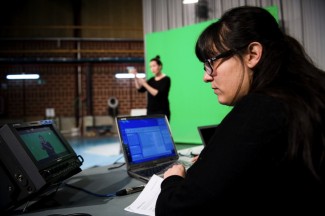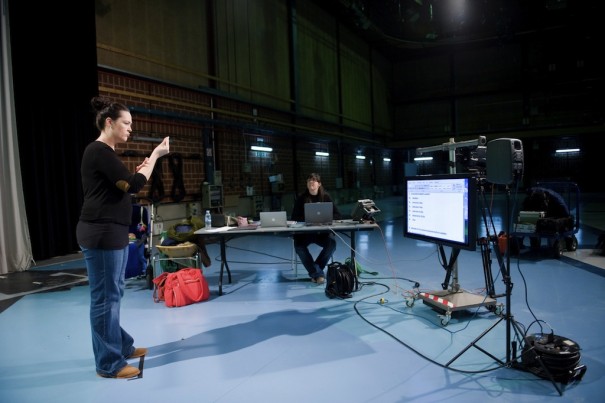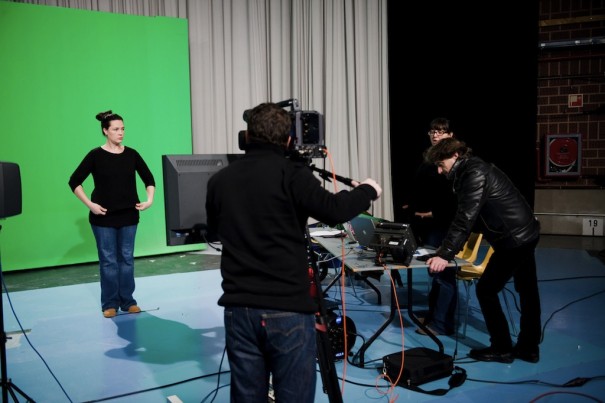RTVE colabora con la Universidad Autónoma de Barcelona en un servicio innovador de accesibilidad a la televisión
RTVE en Cataluña acoge unas pruebas para el desarrollo de un sistema pionero en España de lengua de signos en televisión.
Corporación RTVE está participando como observador en el consorcio europeo de I+D HBB4ALL que desarrolla investigaciones de televisión conectada y sistemas de accesibilidad a los medios de comunicación.
En el marco de esta actividad, RTVE en Cataluña acoge unas pruebas para el desarrollo de nuevos servicios de lengua de signos en televisión.
El líder del proyecto HBB4ALL, la Universidad Autónoma de Barcelona, ha solicitado la colaboración de RTVE, que presta las instalaciones de Sant Cugat para realizar unas grabaciones de lengua de signos. Estás imágenes serán empleadas en fase experimental para trabajar sobre las características formales de inserción de lengua de signos en televisión.
 Unas tareas destinadas a desarrollar un servicio pionero en España de accesibilidad para las personas sordas, que podrían ver la televisión en el formato habitual y, mediante la televisión conectada, recibir la imagen sobreimpresa en lengua de signos. Se estima que alrededor de 350.000 usuarios podrían utilizar a diario este servicio.
Unas tareas destinadas a desarrollar un servicio pionero en España de accesibilidad para las personas sordas, que podrían ver la televisión en el formato habitual y, mediante la televisión conectada, recibir la imagen sobreimpresa en lengua de signos. Se estima que alrededor de 350.000 usuarios podrían utilizar a diario este servicio.
Esta colaboración entre RTVE y la Universidad Autónoma de Barcelona refuerza el papel de ambas entidades públicas en asuntos de I+D a nivel europeo, así como su valor de servicio público.
Las pruebas que se realizan en Sant Cugat se enmarcan en la participación de RTVE como observador en el consorcio europeo HBB4ALL (Hybrid Broadcast Broadband for all). Se trata de un proyecto cofinanciado por la Comisión Europea y por socios de ámbitos complementarios (universidades, canales de televisión y emisoras, centros de investigación y PYMES) para avanzar en la accesibilidad a los medios de comunicación para todos los ciudadanos. RTVE comparte el papel de observador con BBC, France TV y la Asociación de Productores de Cine francés.
Para desarrollar nuevos servicios de accesibilidad, los socios de HBB4ALL trabajan en el entorno de la televisión conectada HbbTV, un estándar cada vez más adoptado por las emisoras europeas. Entre los próximos retos está la creación de contenidos audiovisuales multiplataforma (en cualquier momento, en cualquier lugar y desde cualquier dispositivo) y hacer accesibles esos contenidos a través de subtítulos, audio-descripción y lengua de signos.
Did you like this article?
Subscribe to our NEWSLETTER and you won't miss anything.




